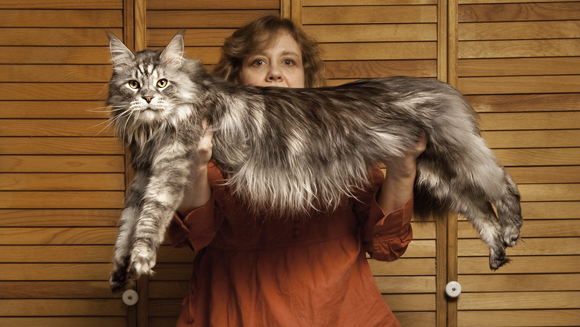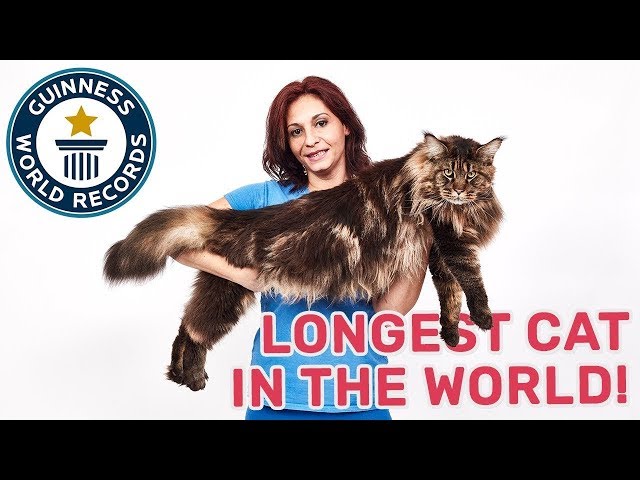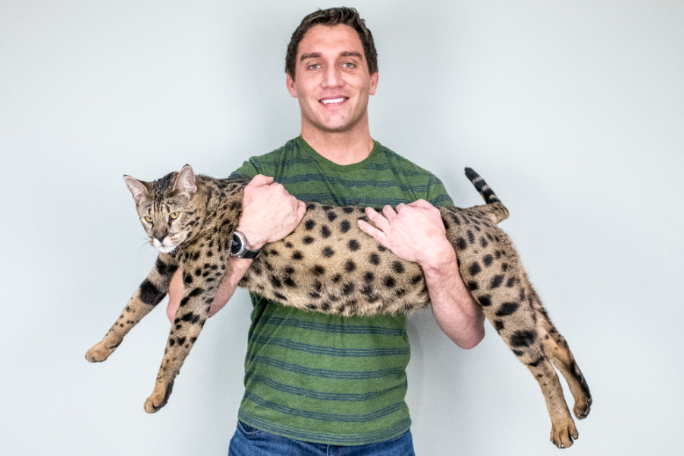The Largest Cats in the World
-
 Emily Carter
Emily Carter - 18 Mar, 2025

Move over tiny kittens—it’s time to spotlight the gentle giants of the feline world! These record-breaking cats make jaws drop with their astonishing size. Let’s dive into the stories of some truly remarkable, enormous cats.
Current Longest Cat: Barivel the Maine Coon
Holding the Guinness World Record as the longest living domestic cat is Barivel, a majestic black-and-white Maine Coon from Italy. Measuring a staggering 120 cm (3 ft 11.2 in) from nose to tail-tip, Barivel claimed his title in May 2018 at just over two years old. To picture his size, imagine a cat longer than a baseball bat! Despite his record-setting length, Barivel is known for his calm, shy demeanor and even enjoys rides in his special stroller—after all, finding a suitable carrier isn’t easy for a feline this big!

Longest Cat Ever Recorded: Stewie the Maine Coon
Before Barivel, another Maine Coon, Stewie (officially named Mymains Stewart Gilligan), set an incredible record of 123 cm (48.5 in) in 2010. Stewie wasn’t just impressively long; he was also hefty, weighing 15.7 kg (34.6 lbs). Renowned for his friendly personality, Stewie charmed people by reaching out with his paw for attention. His record stood proudly until his passing in 2013, briefly succeeded by a British Maine Coon named Ludo until Barivel grew into the current record.

Towering Tall Cats and Heavyweight Felines
It’s not all about length—height and weight also define feline giants:
- Arcturus the Savannah: Standing at 48.4 cm (19.05 in) tall at the shoulder, Arcturus was the tallest cat ever recorded. Tragically, he passed away in 2017, but his younger brother Fenrir now holds the tallest living cat record at 47.83 cm (18.83 in).

- Himmy the Heavyweight Tabby: At an astounding 21.3 kg (46 lb 15 oz), Himmy was the heaviest domestic cat ever documented. Guinness retired this record category in 1998 to discourage unhealthy feeding practices.

Why Do Cats Grow So Massive?
Genetics largely explains feline gigantism. Maine Coons evolved naturally in New England, their massive size providing survival advantages in harsh climates. Similarly, Savannah cats inherit their impressive stature from their wild ancestor, the African serval. Occasionally, individual cats naturally exceed normal sizes without breed factors or health issues—though rare medical conditions can sometimes play a role.
Health Concerns for Giant Cats
Giant cat breeds can face unique health challenges:
-
Heart Health: Maine Coons are prone to hypertrophic cardiomyopathy (HCM), a genetic heart condition.
-
Joint Issues: Large breeds risk developing hip dysplasia or arthritis due to their significant size and weight.
-
Obesity: Excessive weight is particularly risky, potentially leading to diabetes, arthritis, and liver issues.
Care Tips for Your Gentle Giant
Taking good care of your enormous feline friend involves special considerations:
-
Diet Control: Provide balanced, measured meals tailored for large breeds. High-quality protein diets help maintain muscle mass.
-
Exercise: Keep your big cat active with interactive play—large breeds often remain playful into adulthood.
-
Home Accommodations: Invest in jumbo-sized litter boxes, sturdy cat furniture, and oversized carriers to ensure comfort and safety.
-
Regular Grooming: Long-haired breeds require regular brushing to avoid matting and skin problems.
-
Veterinary Care: Schedule routine checkups and specialized screenings (like heart monitoring) to catch potential issues early.
Fun Fact Alert!
Despite their enormous stature, breeds like the Maine Coon are affectionately known as “gentle giants” thanks to their friendly, calm personalities.
These enormous felines prove that in the cat world, sometimes bigger truly is better!